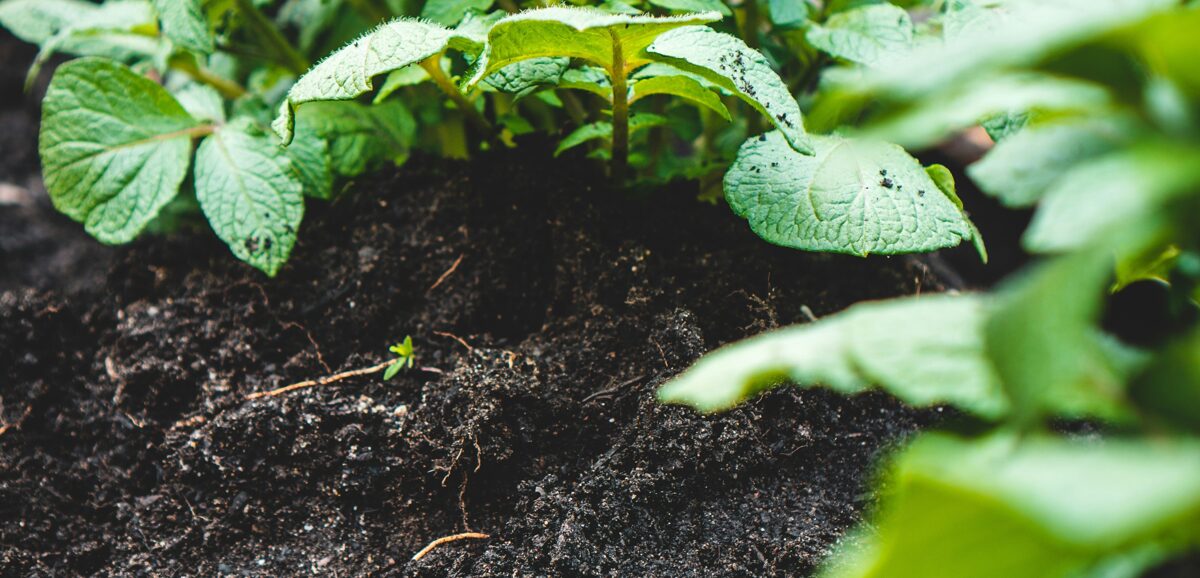What is Cartap Hydrochloride Emamectin Benzoate Used For?

In the ever-evolving world of agriculture, effective pest management is critical to maintaining healthy crops, maximizing yields, and ensuring food security. Two potent compounds that have gained significant traction among farmers are Cartap Hydrochloride and Emamectin Benzoate. While each insecticide has unique properties and uses, their combined applications offer a comprehensive solution for controlling various pests that threaten crops. This blog explores the specific roles, benefits, and uses of Cartap Hydrochloride and Emamectin Benzoate, shedding light on how they contribute to agricultural success.
Understanding Cartap Hydrochloride
Cartap Hydrochloride is a broad-spectrum insecticide known for its efficacy in controlling chewing and sucking pests in various crops. Available in formulations like Cruzep 50 - Cartap Hydrochloride 50% SP, it offers systemic action that moves through plant tissues, providing internal protection against pests. This makes it a valuable tool for controlling stem borers, leaf folders, and other destructive pests.
Key Features and Benefits of Cartap Hydrochloride
Broad-Spectrum Efficacy: It targets multiple insect pests, including stem borers and leaf folders, which are common threats in cereal crops like rice.
Systemic Action: Moves within the plant, providing comprehensive protection to both treated and new growth.
Long-Lasting Residual Effect: Reduces the need for frequent applications, saving time and labor.
Common Applications
Cartap hydrochloride is used extensively in agriculture to control pests in crops such as rice, sugarcane, vegetables, and fruits. Targeting pests that damage plant tissues minimizes crop losses and supports healthy growth.
Stem Borer Control: Effective against pests that bore into plant stems, compromising structural integrity and nutrient flow.
Leaf Folder Management: Prevents leaf damage, preserves photosynthetic capacity, and promotes robust growth.
The Role of Cartap Hydrochloride in Pest Management
Cartap Hydrochloride disrupts pests' nervous systems, causing paralysis and eventual death. Its unique mode of action makes it highly effective against pests that have developed resistance to other insecticides. Additionally, its systemic properties ensure consistent protection throughout the plant, reducing the risk of re-infestation.
“Effective pest control is more than just protection—it’s about empowering plants to reach their full potential.”
Exploring Emamectin Benzoate
Emamectin Benzoate is a semi-synthetic derivative of the naturally occurring avermectins. It is known for its potency against lepidopteran pests (moths and butterflies). This insecticide effectively controls caterpillars and larvae that feed on plant leaves, causing extensive damage.
Key Features and Benefits of Emamectin Benzoate
Targeted Control: Primarily effective against lepidopteran pests, offering precise control and minimizing off-target effects.
Translaminar Action: Moves into plant tissues, providing control even after applying the pesticide to the surface.
High Potency: Effective at low concentrations, reducing the active ingredient needed per application.
Common Applications
Emamectin Benzoate is widely used in vegetable crops, fruits, and other plants vulnerable to caterpillar infestations. It controls pests like the diamondback moth, cabbage worm, and fruit borer, which can cause severe crop losses if left unchecked.
Caterpillar Control: Targets larvae that feed on leaves, flowers, and fruits, preventing significant damage.
Reduced Residue Levels: Due to its effectiveness at low doses, Emamectin Benzoate often results in lower pesticide residues on crops.
The Synergistic Use of Cartap Hydrochloride and Emamectin Benzoate

Combining Cartap Hydrochloride and Emamectin Benzoate in pest management strategies offers a comprehensive solution for controlling both chewing and sucking pests, as well as caterpillars. This synergistic approach ensures broader crop protection and minimizes the risk of resistance development.
Benefits of Combining These Insecticides
Broader Spectrum Control: The combination offers comprehensive protection for various crops by targeting different types of pests.
Enhanced Efficacy: The distinct modes of action reduce the likelihood of resistance, ensuring long-term effectiveness.
Reduced Frequency of Application: Long-lasting residual effects minimize the need for frequent applications, lowering labor costs and improving convenience.
Application Guidelines and Best Practices
Proper application techniques and adherence to recommended guidelines are essential to maximizing the benefits of Cartap Hydrochloride and Emamectin Benzoate.
1. Correct Dosage and Mixing
The correct dosage is crucial for effective pest control while minimizing environmental impact.
Cartap Hydrochloride: Typical dosage recommendations for Cartap Hydrochloride 50 SP range from 400 to 600 grams per acre, depending on crop type and pest pressure.
Emamectin Benzoate: The dosage varies depending on crop and pest infestation levels; always follow manufacturer guidelines for precise application.
2. Uniform Application
Ensure even distribution of the insecticides across the crop canopy to maximize contact with pests.
Use Quality Sprayers: High-quality sprayers help achieve uniform coverage, particularly on the undersides of leaves where many pests hide.
Focus on High-Risk Areas: Target areas with visible pest activity to enhance effectiveness.
3. Monitoring and Timing
Regular monitoring of pest populations and environmental conditions helps determine the optimal timing for application.
Early Intervention: Apply insecticides at the first sign of infestation to prevent pest populations from becoming established.
Weather Considerations: Avoid application during heavy rainfall or strong winds to prevent drift and maximize efficacy.
Cost Considerations and Accessibility
The price of cartop hydrochloride 50 sp and other insecticides can vary based on market conditions, brand, and packaging size. However, investing in effective pest control solutions offers long-term benefits, including increased yields, improved crop quality, and reduced economic losses due to pest damage.
Cost-Effective Solutions: Bulk purchasing and cooperative buying can help reduce costs for smallholder farmers.
Value for Investment: Protecting crops from pest infestations ensures better returns on investment.
Cartap Hydrochloride and Emamectin Benzoate are potent tools in the fight against crop-damaging pests. Farmers can develop effective, climate-adapted pest management strategies that protect crops, enhance growth and promote sustainable agricultural practices by understanding their unique properties, applications, and benefits. With the right approach, every field can thrive, offering abundant yields and resilient plants in the face of changing agricultural challenges.
Understanding the Different Types of Yield Boosters in Agriculture
 In modern agriculture, increasing crop yields sustainably and efficiently is essential to meet the growing global demand for food. Yield boosters have become vital tools that help farmers enhance productivity by optimizing plant growth and improving soil health. However, not all yield boosters are created equal, and understanding the different types is crucial for choosing the right one for your farm. Whether you're working with grains, vegetables, or fruit crops, selecting the appropriate yield booster can make a substantial difference in both your crop yield and the long-term health of your soil.
In modern agriculture, increasing crop yields sustainably and efficiently is essential to meet the growing global demand for food. Yield boosters have become vital tools that help farmers enhance productivity by optimizing plant growth and improving soil health. However, not all yield boosters are created equal, and understanding the different types is crucial for choosing the right one for your farm. Whether you're working with grains, vegetables, or fruit crops, selecting the appropriate yield booster can make a substantial difference in both your crop yield and the long-term health of your soil.
In this blog, we'll explore the different types of yield boosters available in agriculture, how they work, and why they are essential for modern farming practices.
Why Yield Boosters Matter in Agriculture
Yield boosters have been developed to address the challenges farmers face with nutrient-depleted soils, inconsistent rainfall, and the overuse of chemical fertilizers. With soil degradation becoming a global issue, yield boosters offer an effective solution for revitalizing crop fields and promoting sustainable agricultural practices. More than just a quick fix, these products play a vital role in long-term soil health and crop success.
Farmers who purchase Yield boosters often see a boost in productivity, better crop resilience, and improved soil conditions. Whether through increased nutrient uptake or enhanced root development, yield boosters ensure crops reach their full potential.
Benefits of Yield Boosters:
Improved Nutrient Absorption: Yield boosters help plants access more nutrients from the soil, leading to healthier, more robust crops.
Increased Crop Resilience: Yield boosters make crops more resistant to environmental stressors by enhancing root strength and plant immunity.
With these benefits in mind, let's dive into the different types of yield boosters and their specific advantages for various farming systems.
Organic Yield Boosters
Organic yield boosters are derived from natural ingredients such as compost, seaweed extracts, and plant-based bio-stimulants. They align with organic farming principles, promoting sustainable practices and avoiding synthetic chemicals. Organic boosters enhance the biological processes within plants, improving nutrient uptake, growth, and disease resistance.
How Organic Yield Boosters Work
Organic yield boosters often contain beneficial microorganisms that help break down organic matter in the soil, making essential nutrients available for plant uptake. These boosters also stimulate root development and encourage microbial activity in the soil, leading to improved soil structure and fertility.
For organic farmers, these boosters are essential for maintaining certification and ensuring that their crops meet the high standards of the organic market. Conventional farmers increasingly turn to organic yield boosters as part of an integrated pest and nutrient management strategy.
Example of Organic Yield Boosters:
Compost Tea: Made from decomposed organic matter, compost tea is rich in beneficial bacteria and fungi that improve soil health and promote plant growth.
Seaweed Extract: Seaweed contains essential plant hormones that encourage root development, making it an excellent organic growth promoter.
Organic yield boosters are highly effective for farmers seeking to enhance yield while maintaining eco-friendly farming practices.
Synthetic Yield Boosters
Synthetic yield boosters, often called chemical fertilizers or growth enhancers, are formulated from man-made compounds designed to deliver specific nutrients to plants. These products typically contain a combination of nitrogen, phosphorus, and potassium (NPK), along with other essential micronutrients. They are famous for their ability to provide rapid growth results, especially in high-demand agricultural settings.
How Synthetic Yield Boosters Work
Synthetic yield boosters provide an immediate source of nutrients that plants can easily absorb, leading to faster growth and higher yields. These fertilizers are often applied at specific growth stages to target the most critical phases of plant development. While highly effective, their long-term use can lead to soil degradation if not managed carefully, as they may disrupt the natural balance of soil microorganisms.
Farmers working on large-scale industrial farms may use synthetic yield boosters to maximize output quickly. Still, there is growing awareness of the need to balance artificial and organic inputs for better soil health.
Example of Synthetic Yield Boosters:
NPK Fertilizers: These fertilizers provide a balanced combination of nitrogen, phosphorus, and potassium, the three essential nutrients needed for plant growth.
Micronutrient Blends: Specialized fertilizers containing micronutrients like zinc, magnesium, and iron to address specific nutrient deficiencies in the soil.
While synthetic yield boosters can increase yields quickly, many farmers are adopting a more balanced approach by combining them with organic solutions to ensure long-term soil sustainability.
Bio-Stimulants
Bio-stimulants are yield boosters that enhance plant growth by activating the plant’s natural processes. Unlike fertilizers that supply nutrients, bio-stimulants stimulate the plant’s metabolic pathways to improve nutrient uptake, root development, and stress tolerance. Bio-stimulants are derived from various sources, including plant extracts, amino acids, and beneficial microbes.
How Bio-Stimulants Work
Biostimulants enhance the plant's ability to absorb nutrients and resist stress from drought, pests, or extreme temperatures. They also promote hormonal activity within the plant, ensuring more efficient growth processes. As a result, plants treated with biostimulants tend to be more resilient and productive, even in challenging growing conditions.
Example of Bio-Stimulants:
Humic Acid: Derived from decomposed organic matter, humic acid improves soil structure, increases water retention, and boosts nutrient availability.
Amino Acid Blends: Amino acids act as building blocks for plant proteins, promoting faster growth and more robust root development.
Bio-stimulants are increasingly popular among farmers looking to enhance yields naturally while reducing their dependence on chemical inputs.
Microbial Yield Boosters
Microbial yield boosters are products that introduce beneficial microorganisms, such as bacteria and fungi, into the soil to improve plant growth. These microbes help break down organic matter and fix essential nutrients, such as nitrogen, into forms that plants can easily absorb.
How Microbial Yield Boosters Work
Microbial yield boosters enhance the soil’s ecosystem. The microbes within these boosters work symbiotically with plants, aiding in nutrient acquisition, improving soil structure, and increasing the plant’s resistance to diseases. By creating a healthier soil environment, microbial boosters contribute to long-term soil fertility and sustainability.
Example of Microbial Yield Boosters:
Rhizobium Inoculants: These nitrogen-fixing bacteria are often used in legume crops to increase nitrogen availability and improve plant growth.
Mycorrhizal Fungi: These fungi form symbiotic relationships with plant roots, expanding the root system’s surface area and increasing nutrient and water uptake.
Microbial yield boosters are essential for building healthy soils, especially in degraded or nutrient-poor environments.
Choosing the Right Yield Booster for Your Farm
With so many yield boosters available, selecting the right one for your farm depends on several factors, including the type of crops you’re growing, your soil condition, and your farming philosophy. Organic and microbial yield boosters may be ideal for farmers focused on sustainability, while synthetic options might suit those looking for immediate results in large-scale farming operations.
Balancing short-term productivity with long-term soil health is essential, and many farmers are finding success by combining different types of yield boosters into an integrated approach that supports both high yields and sustainability.
"Boosting crop growth is about more than increasing yields—it’s about nurturing the soil, fostering resilience, and securing the future of farming. With Yield Booster, farmers can achieve all this while keeping their land healthy for generations."
The Future of Yield Boosters in Agriculture
As global demand for food continues to rise, yield boosters will play an increasingly important role in meeting production goals sustainably. Advances in biotechnology and organic farming practices will likely lead to developing even more effective yield boosters that support high productivity and environmental protection.
 In modern agriculture, increasing crop yields sustainably and efficiently is essential to meet the growing global demand for food. Yield boosters have become vital tools that help farmers enhance productivity by optimizing plant growth and improving soil health. However, not all yield boosters are created equal, and understanding the different types is crucial for choosing the right one for your farm. Whether you're working with grains, vegetables, or fruit crops, selecting the appropriate yield booster can make a substantial difference in both your crop yield and the long-term health of your soil.
In modern agriculture, increasing crop yields sustainably and efficiently is essential to meet the growing global demand for food. Yield boosters have become vital tools that help farmers enhance productivity by optimizing plant growth and improving soil health. However, not all yield boosters are created equal, and understanding the different types is crucial for choosing the right one for your farm. Whether you're working with grains, vegetables, or fruit crops, selecting the appropriate yield booster can make a substantial difference in both your crop yield and the long-term health of your soil.Improved Nutrient Absorption: Yield boosters help plants access more nutrients from the soil, leading to healthier, more robust crops.
Increased Crop Resilience: Yield boosters make crops more resistant to environmental stressors by enhancing root strength and plant immunity.
Compost Tea: Made from decomposed organic matter, compost tea is rich in beneficial bacteria and fungi that improve soil health and promote plant growth.
Seaweed Extract: Seaweed contains essential plant hormones that encourage root development, making it an excellent organic growth promoter.
NPK Fertilizers: These fertilizers provide a balanced combination of nitrogen, phosphorus, and potassium, the three essential nutrients needed for plant growth.
Micronutrient Blends: Specialized fertilizers containing micronutrients like zinc, magnesium, and iron to address specific nutrient deficiencies in the soil.
Humic Acid: Derived from decomposed organic matter, humic acid improves soil structure, increases water retention, and boosts nutrient availability.
Amino Acid Blends: Amino acids act as building blocks for plant proteins, promoting faster growth and more robust root development.
Rhizobium Inoculants: These nitrogen-fixing bacteria are often used in legume crops to increase nitrogen availability and improve plant growth.
Mycorrhizal Fungi: These fungi form symbiotic relationships with plant roots, expanding the root system’s surface area and increasing nutrient and water uptake.
We have a new website
This is our first blog post on our new website. We have created this website with Mozello - the easiest website creator on the planet.